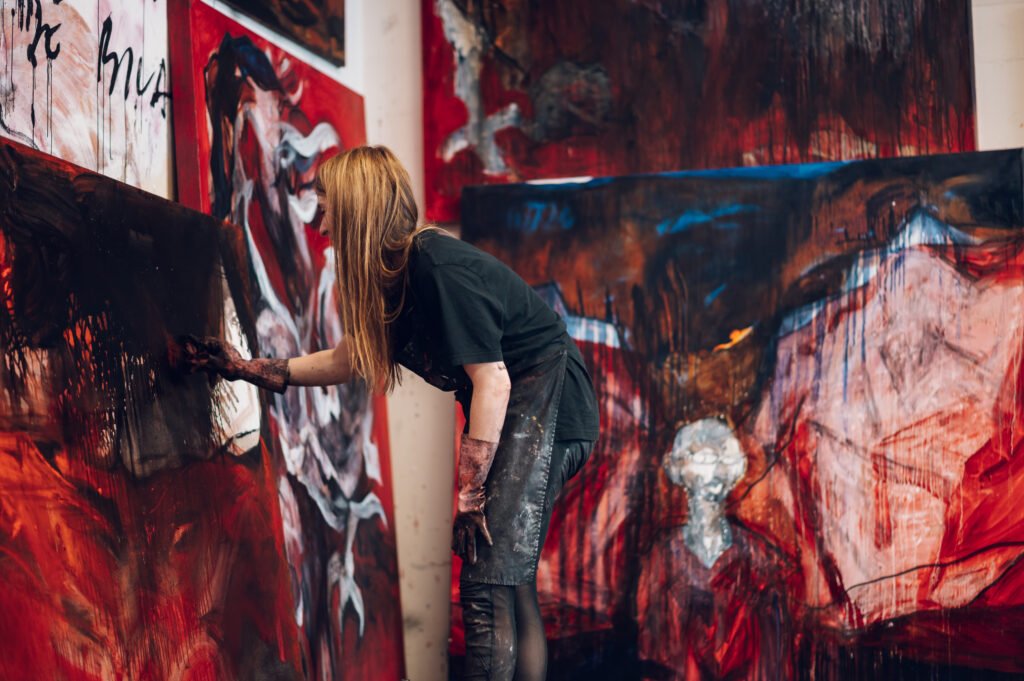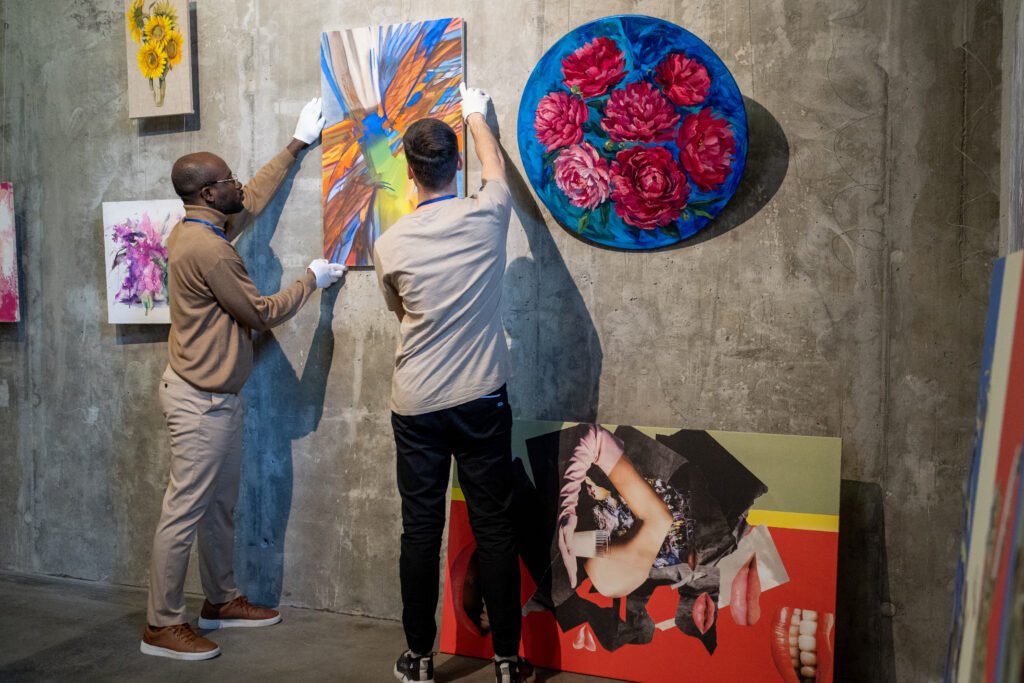Contemporary art mirrors a world overwhelmed by an abundance of images, information, and stimuli. In this fast-paced environment, it responds not with restraint, but with excess. Many current works adopt accumulation, visual exaggeration, a multiplicity of references, and saturation as aesthetic strategies. This choice is not accidental; it directly relates to how we live, consume, and communicate today.
At the same time, this excess creates tension within art criticism itself. Some experts point to growing superficiality, while others see a legitimate attempt to translate the complexity of contemporary life.
In any case, 21st-century art has incorporated noise, overflow, and contradictions as part of its language. This movement has changed not only the form of artworks but also how they circulate in the market and are perceived by the public.
The Aesthetics of Excess: Collage, Accumulation, and Constant Stimulation
The aesthetics of excess go beyond mere visual appearance. They manifest in a multiplicity of materials, overlapping references, and the exploration of simultaneous stimuli. Many artists use images from mass culture, fragments of everyday objects, lights, sounds, and words to create works that demand heightened attention from the viewer. This overload reflects directly on hyperconnected society.
Examples abound in multimedia installations, digital collages, urban murals, and immersive environments. Artists like Pipilotti Rist and Takashi Murakami clearly translate this language. Vibrant colors, exaggerated forms, intense sounds, and repetition create a sensory environment that is almost impossible to ignore. Instead of suggesting silence or contemplation, these works provoke unease, excitement, or strangeness.

This excess also serves as a critique of the overconsumption of images and products. Instead of retreating, contemporary art often responds with irony, exaggeration, and repetition. It mimics the mechanisms of advertising, social media, and the press to reveal their structures and impacts. Thus, excess becomes both a critical and aesthetic tool.
Moreover, this mode of production breaks with the logic of formal purity so valued by earlier movements. Contemporary artists mix languages, reuse materials, and work with visual contradictions. This creates an aesthetic field where everything is valid as long as it generates impact, reflection, or discomfort. Traditional beauty gives way to provocation, noise, and multiplicity.
Art, Market, and Criticism: Excess as Strategy and Challenge
The excess present in contemporary art is not limited to form; it also extends to the economic realm. The art market has never been so active, globalized, and competitive. Biennials, international fairs, multi-million-dollar auctions, and private collections move impressive sums and transform artists into celebrities. In this environment, excess becomes a visibility strategy: the flashier the work, the greater the chance of standing out.
This logic sparks intense discussions within art criticism. Some experts see conceptual emptiness in the face of visual seduction. Others defend that excess, when well articulated, is a legitimate response to the world’s own excess. In both cases, it is clear that contemporary art is deeply tied to dynamics of consumption and communication.
In the 21st century, by embracing multiplicity, art faces the challenge of maintaining depth amid noise. Many works are accused of superficiality or empty spectacle. However, others manage to explore excess with critical density, revealing contradictions of contemporary visual culture. The tension between immediate impact and lasting reflection has become one of the central dilemmas of today’s art field.
In this scenario, the role of the audience also changes. The viewer is no longer just a silent observer. They participate, share, photograph, comment, and react. The artwork no longer exists only in the gallery; it circulates through social networks, videos, and memes. This multiplication of contexts further reinforces excess as a defining characteristic of contemporary art.
Finally, the language of excess should not be seen as a flaw or gratuitous exaggeration. It expresses an attempt to engage with a time marked by speed, fragmentation, and abundance. By reflecting this scenario, contemporary art invites the audience to think about their own ways of living, seeing, and feeling the world.



